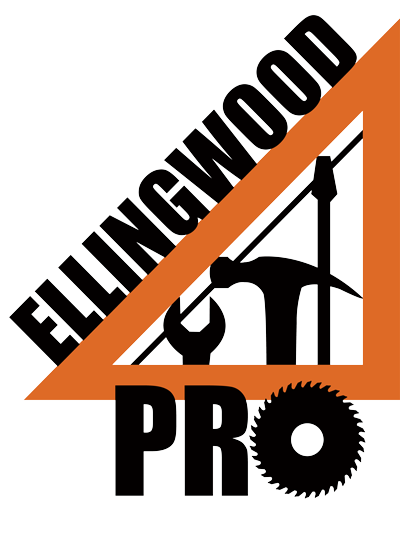Safeguarding your property against potential threats requires thorough knowledge and proactive measures. Among the various issues homeowners face, the presence of wood-destroying organisms is a significant concern. Termites, in particular, are notorious for their destructive nature. In this comprehensive guide, we will delve into the importance of wood destroying organism inspections, with a primary focus on termite inspections. By combining valuable insights, we will cover the key aspects of termite infestations, focusing on identification, prevention, and understanding their behavior. By the end of this guide, you will be equipped with the knowledge and strategies necessary to protect your valuable investments.
1. The Menace of Wood Destroying Organisms:
Wood-destroying organisms pose a severe threat to the structural integrity of buildings, leading to substantial damage if left unchecked. Among the various pests in this category, termites reign

Termites are known as the silent destroyers due to their ability to silently consume wood and cause extensive damage. Their insatiable appetite for cellulose-rich materials, such as wood, makes them formidable enemies. They build intricate tunnel systems, called mud tubes, to travel undetected between their nests and food sources, making it challenging to spot their presence until significant damage has already occurred. To protect your property from this menace, it is crucial to understand their behavior, feeding habits, and the signs of infestation, enabling you to take proactive measures and preserve the structural integrity of your building.
2. Wood Destroying Organism Inspection (aka Termite Inspections): The First Line of Defense:
a. The Crucial Role of Wood Destroying Organism Inspection (aka Termite Inspection) in Early Detection and Prevention:
Termite inspections go beyond a mere formality; they are a vital step in safeguarding your property against these destructive pests. These inspections serve as the first line of defense by enabling early detection and prevention of termite infestations. By conducting regular termite inspections, homeowners can identify subtle signs of termite activity and take prompt action to mitigate potential damage.
Termite infestations can go unnoticed for extended periods, causing significant harm to the structural integrity of buildings. However, with routine Wood Destroying Organism inspections (aka termite inspections), professionals can detect signs of termite presence before extensive damage occurs. This proactive approach not only saves homeowners from costly repairs but also ensures the safety and longevity of their properties.
b. Identifying Telltale Signs: Uncovering the Clues of Termite Infestation:
Thorough termite inspections empower professionals to identify a range of telltale signs that indicate termite infestation. These signs act as red flags, alerting homeowners to the presence of these silent destroyers. By recognizing these indicators, homeowners can take swift action to address the issue. 

During inspections, experts carefully examine various areas susceptible to termite activity. They look for mud tubes, which termites construct to travel safely between their nests and food sources. These tubes are often found along the foundation, walls, or other concealed areas.
Another common sign is the presence of discarded wings. Winged termites, known as swarmers or alates, leave their nests to mate and establish new colonies. These discarded wings are a clear indication of termite activity nearby.
Termite droppings, also known as frass, are yet another sign to watch out for during inspections. These tiny, wood-colored pellets are typically found near termite feeding sites and indicate active infestation.
Visible wood damage is a crucial indicator of termite presence. Inspectors meticulously examine wooden structures, looking for hollowed-out or damaged wood, blistering, or unexplained cracks. Such damage signifies an ongoing termite infestation and warrants immediate attention.
c. Advanced Techniques for Comprehensive Inspections:
Seasoned termite inspectors employ a range of advanced techniques to conduct comprehensive and thorough inspections. These techniques utilize cutting-edge tools and technologies to identify even hidden termite activity, ensuring no corner of your property goes unnoticed.
Visual inspections remain a fundamental aspect of termite inspections. Inspectors meticulously examine both the interior and exterior of the property, paying close attention to vulnerable areas such as basements, crawl spaces, attics, and wooden structures. They look for subtle signs, irregularities, or changes in the appearance of wood, indicating potential termite infestation.
Moisture meters are invaluable tools used during termite inspections. These devices help detect areas with excessive moisture, which attracts termites. By identifying and addressing moisture issues, homeowners can eliminate favorable conditions that may encourage termite activity.
Infrared technology, such as thermal imaging cameras, is a game-changer in termite inspections. These devices can identify temperature differences that may indicate hidden termite colonies or moisture problems within walls or other inaccessible areas. This non-invasive method provides invaluable insights into potential termite activity.
By employing a combination of visual inspections, moisture meters, and infrared technology, professional termite inspectors leave no stone unturned. Their meticulous approach ensures the accurate identification of termite activity, even in hard-to-reach areas of your property.
Through comprehensive termite inspections and the utilization of advanced techniques, homeowners gain a deeper understanding of the scope of termite infestations and can take appropriate measures to protect their valuable investments.
3. Understanding Termites: Their Behavior and Biology:
a. Termite Colonies and Castes:

Termites live in large colonies, consisting of different castes with specific roles. The primary castes include workers, soldiers, and reproductive termites. Each caste contributes to the survival and expansion of the termite colony.
b. Subterranean Termites vs. Drywood Termites:
Two main types of termites commonly infest structures—subterranean termites and drywood termites. Understanding their behavior, preferred habitats, and feeding patterns is crucial for effective termite control strategies.
c. Life Cycle of Termites:
Termites undergo a complex life cycle, including the egg, nymph, and adult stages. By understanding their life cycle, homeowners can identify vulnerable stages for targeted treatments and prevention.
4. Preventive Measures and Treatment Options:
a. Wood Destroying Organism Inspections (aka Termite Inspections) as Preventive Measures:
Regular wood destroying organism inspections, with a particular focus on termite inspections, form a proactive approach to identify vulnerabilities and implement preventive measures. Inspectors can assess the property’s risk factors, recommend corrective actions, and offer guidance on moisture control and structural modifications.
b. Termite Treatment Options:


c. Non-Chemical Treatment Alternatives:
For homeowners concerned about chemical treatments, alternative methods such as heat treatments and electro-gun treatments can be explored. These approaches target termites without relying on traditional pesticides.
d. Preventive Measures for Future Infestations:
In addition to treatment options, implementing preventive measures is crucial to protect your property against future termite infestations. These measures include regular wood destroying organism inspections (aka termite inspections), maintaining proper ventilation, addressing moisture issues, and ensuring a termite-resistant construction design.
5. DIY vs. Professional Inspections:
a. The Limitations of DIY Inspections:
While it may be tempting to perform termite inspections independently, there are limitations to consider. Professional inspectors possess the expertise, experience, and specialized equipment necessary for accurate identification and assessment of termite activity.
b. Benefits of Professional Inspections:
Engaging professional pest control services for wood destroying organism inspections offers several advantages. Professionals can provide comprehensive reports, tailored treatment plans, ongoing monitoring, and warranties to ensure long-term protection against termites.
c. When to Seek Professional Help:
While DIY inspections have their place, it is essential to recognize when professional assistance is warranted. Large infestations, complex termite species, and structural vulnerabilities may require the expertise of a pest control professional to ensure effective eradication and prevention.
6. Integrated Pest Management: A Holistic Approach:
a. The Concept of Integrated Pest Management (IPM):
Integrated Pest Management (IPM) is an effective and environmentally friendly approach to pest control. It emphasizes preventive measures, regular inspections, targeted treatments, and ongoing monitoring to maintain a pest-free environment.
b. Implementing IPM for Termite Control:
By incorporating IPM principles into termite control strategies, homeowners can adopt a proactive approach, reduce reliance on chemical treatments, and ensure long-term protection against termites and other wood-destroying organisms. IPM may include regular inspections, sealing entry points, implementing moisture control measures, and installing termite barriers.
Conclusion:
Wood destroying organisms, particularly termites, pose a significant threat to the structural integrity of properties. Regular wood destroying organism inspections, specifically termite inspections, are vital for early detection, prevention, and effective treatment. By understanding the behavior and biology of termites, implementing preventive measures, considering professional services, and adopting an integrated pest management approach, homeowners can safeguard their investments and enjoy a termite-free living environment. Remember, when it comes to termites, knowledge and proactive action are key to protecting your property for years to come.
Here at Ellingwood Pro Home Inspections, our inspector takes their time and reviews all aspects of the home that these little guys can get into and destroy. During the wood-destroying organism/ termite inspection, we will review and inspect the home interior and exterior for any confirmation of wood-destroying insects and wood-destroying organisms. The inspector will detail his findings in his report so you can determine if a more advanced inspection is needed or if there are no signs of damage at the time of the inspection.
The inspection will include a detailed termite/ WDO inspection report, known as the NPMA-33, documenting the home inspector’s findings. Termites and wood destroying organisms might seem like something that isn’t a major deal because they are so tiny but they are actually a huge deal if they start chomping on your home. They can also be a very costly problem! Make sure to get your home inspected for termites and wood destroying organisms! Give us a call today to have a termite inspection completed in your home.
Have questions about our home inspections and services? Give us a call at 276-566-5669. You can schedule directly online or by giving us a call. Curious about the cost of our services? Check out our free estimate tool on our website or by clicking here.


